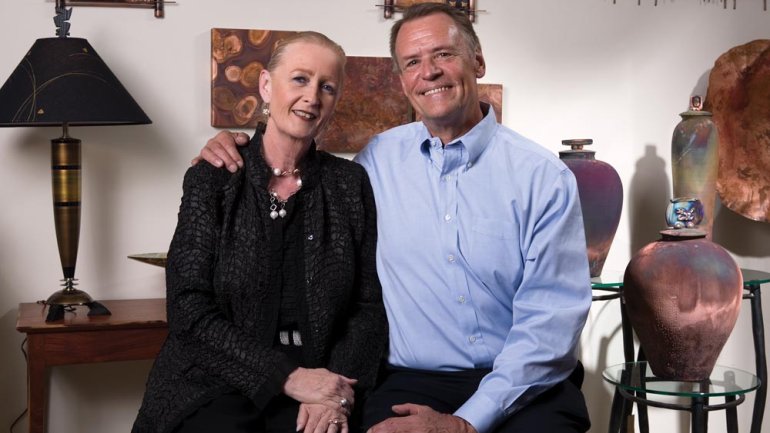How Have You ‘Greened’ Your Work Practice?
How Have You ‘Greened’ Your Work Practice?
We have looked carefully at everything to conserve energy and avoid waste. We’ve added three programmable thermostats to manage the air conditioning more efficiently, added timers to better control the 150 halogen lights in our gallery and replaced some with LED lights. We also save and reuse packaging including bubble wrap, packing peanuts, and boxes for shipments to our customers. We emphasize that American craft pieces are long-lasting, especially compared to candy and flowers.
~Joanne and Peter Hildt, owners, Pinnacle Gallery, Scottsdale, AZ
Sustainability in teaching history means utilizing scanners so that photocopying is kept to a minimum and asking all students to submit papers digitally. Plus, no one can claim “my dog ate my PDF.” Witnessing art students fill massive dumpsters with art, I encourage them to develop an interest in making prototypes. Lastly, I am a big fan of Alfred University’s student-run REPO, a reclamation center for all sorts of stuff.
~Ezra Shales, associate professor, School of Art & Design, Alfred University, Alfred, NY
We green our work practices through our determination to run a lean and low-energy-consumptive art-glass shop. Keeping powered equipment minimal and operating it only when my wife Carrie and I are blowing assures a smaller carbon footprint for each piece we craft – which our patrons appreciate. From blowing recycled bottle glass to choosing eco-packing materials, maintaining sustainable practices while growing our shop’s production is integral to our small business success and karma.
~Dean Wolf, artist, Wolf Art Glass & Pottery, Austin, TX
For me, being green is my life philosophy. I green myself and `e ko logic [clothing design and manufacturing studio] by nurturing respect for our environment and paying attention to my everyday actions. I choose to recycle. It lessens the landfill in my region and saves 97 percent of the energy required to make something new. Recycling teaches me to find value and see beauty while inspiring me to transform parts of people’s lives into unique wearable art with soap, water, and creativity.
~Kathleen Tesnakis,`e ko logic, Troy, NY
There are well-worn jokes regarding Portland’s near-obsession with knowing the origin of food. In my case, the same jokes can be made regarding the sourcing of artist materials. The hidden ecological cost associated with the extraction of raw materials is the shadow behind even the most conscious studio practice; consequently, as an artist it is important to reduce waste and to source every material. As a curator for Bullseye Gallery I am lucky in that all of the artists we work with use Bullseye Glass. Bullseye Glass Company has a multi-award-winning water recycling system and has reduced their carbon emissions by switching to oxygen-fueled furnaces. When speaking about the artwork, I know that it began from an ecologically conscious source.
~Michael Endo, assistant curator, Bullseye Gallery, Portland, OR
My husband and I make kitchen and serving ware using local, sustainably harvested hardwoods. Our raw materials have a small carbon footprint. We coat our pieces with U.S.-made heated linseed oil, not mineral oil (an imported petroleum byproduct). We live off-grid. In our nearby on-grid workshop (six miles round-trip), we’re extremely energy-conscious. Heat, electricity, and water are precious. We use all of our wood: big chunks for cutting boards, tiny bits for utensils. The rest is kindling, and we use the acidic sawdust in our gardens and outhouse.
~Meb Boden and Tom Vaiciulis, artists, South Woodstock, CT

